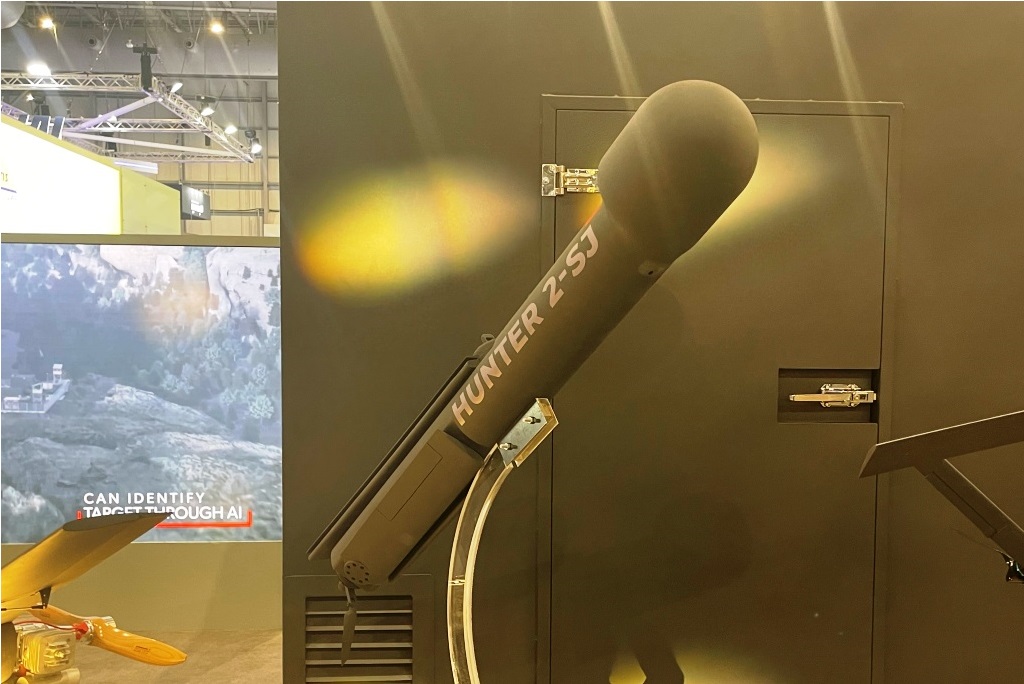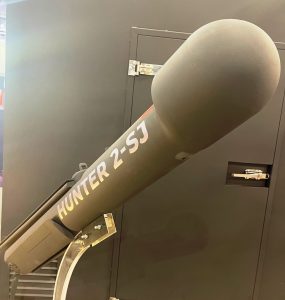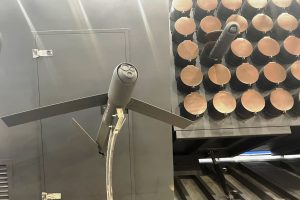
Dubai Air Show 2023 – EDGE Hunter loitering munition family grows
EDGE has recently developed a family of loitering munitions with intelligence, surveillance and reconnaissance capabilities under the Hunter name. Four of those are fixed wing while one is rotary wing. At the Dubai Air Show 2023 the UAE defence group unveiled two new systems, which increase the flexibility of its loitering munitions family
With its Hunter 5, 10 and 2-S, where the S stands for swarm, already in production for the UAE Armed Forces Halcon, the UAS specialist within the EDGE Group, unveiled at the Dubai Air Show two more members of the Hunter family, which also includes the Hunter SP and the rotary wing member of the group.
Hunting enemy jammers is the aim of the Hunter 2-SJ, where J stands for Jammer. By neutralising the means used by opponents to impede communications and navigation to friendly forces, the new Hunter will allow the latter to regain freedom of movement and coordination effectiveness.

The 1.5 metres long Hunter 2-SJ is designed to be air-launched, its low mass, up to 13 kg, allowing it to be easily carried by tactical unmanned airframes. Once launched its main wings deploy swinging forward, wingspan is 2.2 metres, while the two rudders take their V-shape swinging backwards, the propeller blades also opening up, the rear-mounted electric motor starting to ensure a 45 minutes flight at an average speed of 25 m/s, or 90 km/h.
The data-link range being 50 km, the Hunter 2-SJ can reach the maximum target distance in around half an hour, flying autonomously towards the planned area of operation. It then starts loitering searching for jammers, operational altitude being 2,000 metres. Once it identifies one or more, the information is send back to the ground control station where an operator will assess the data received, and once he designates it as a target he send back the attack clearance to the munition.
The Hunter 2-SJ can carry a 2 kg payload, which should include both the EW system as well as the warhead. It can however also operate in swarm with other Hunter 2-S, acquiring multiple targets for a swarm attack.

The second new Hunter family member if the Hunter-N and is a derivative of the Hunter SP optimised for naval operations, hence the N designator. The airframe architecture is similar to that of the anti-jammers munition, however dimensions are smaller, length being 0.8 metres while wingspan is 1.2 metres, launch mass being 4.5 kg. It is also tube-launched, launch elevation being comprised between 20° and 40°. Multiple-tube canisters are available, the number of launch tubes depending on the available space on the boat. The single launcher has the same mass of the air vehicle, 4.5 kg, which makes a single system having a mere 9 kg mass, which allows installing Hunter N launchers on any type of vessel, manned or unmanned.
With a cruise speed of 39 m/s (140 km/h) and a maximum speed of 45 m/s (162 km/h) it has an endurance of 12 minutes, and can rapidly reach the assigned operational area to start loitering until its optronic sensors do not send back to the operator the image of a potential target. Here too the system maintains the man-in-the-loop concept, and once the target is identified and confirmed it starts its dive to hit it at speed neutralising or damaging it with its 500 grams warhead.
Photos by J. Roukoz

